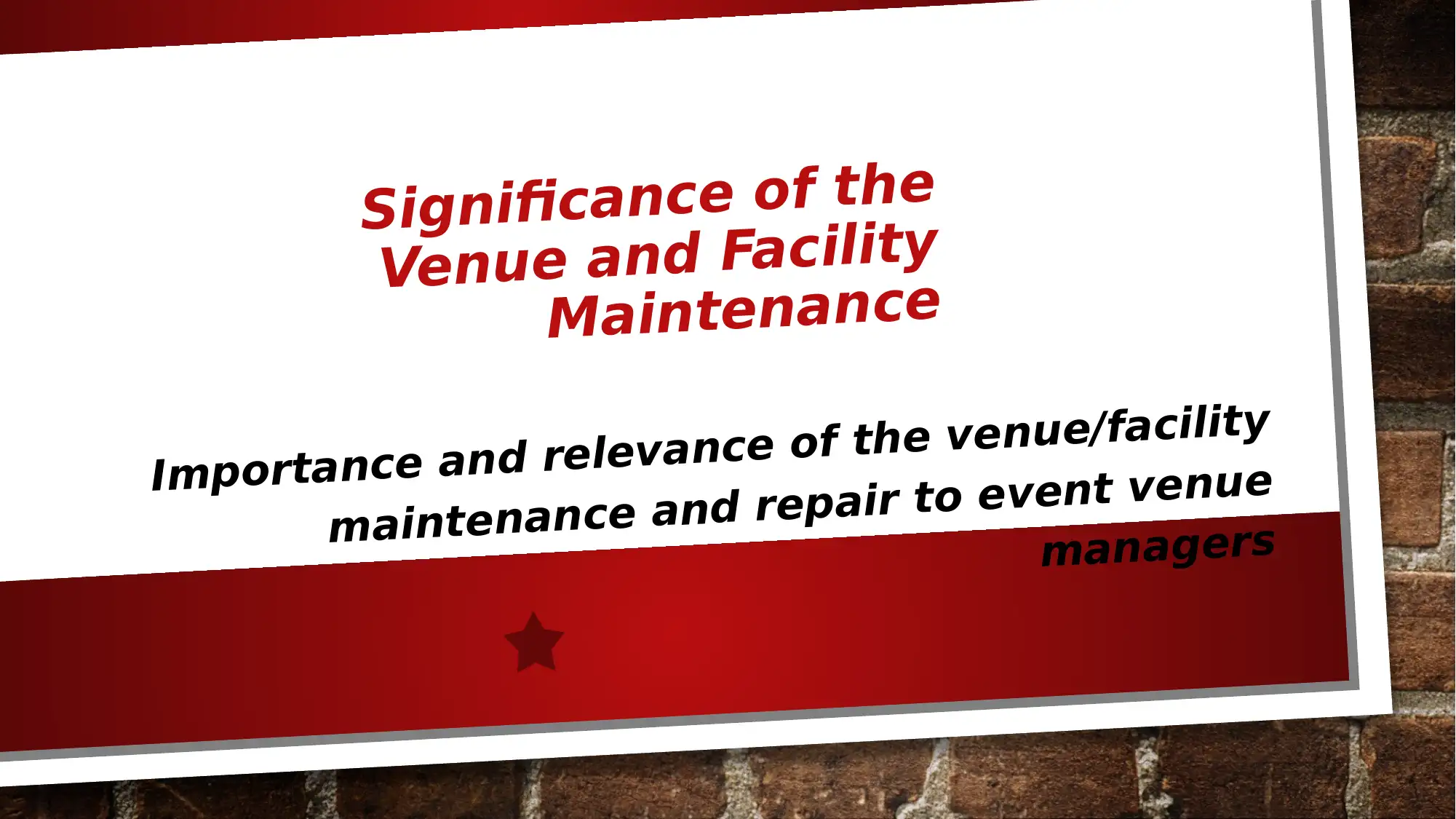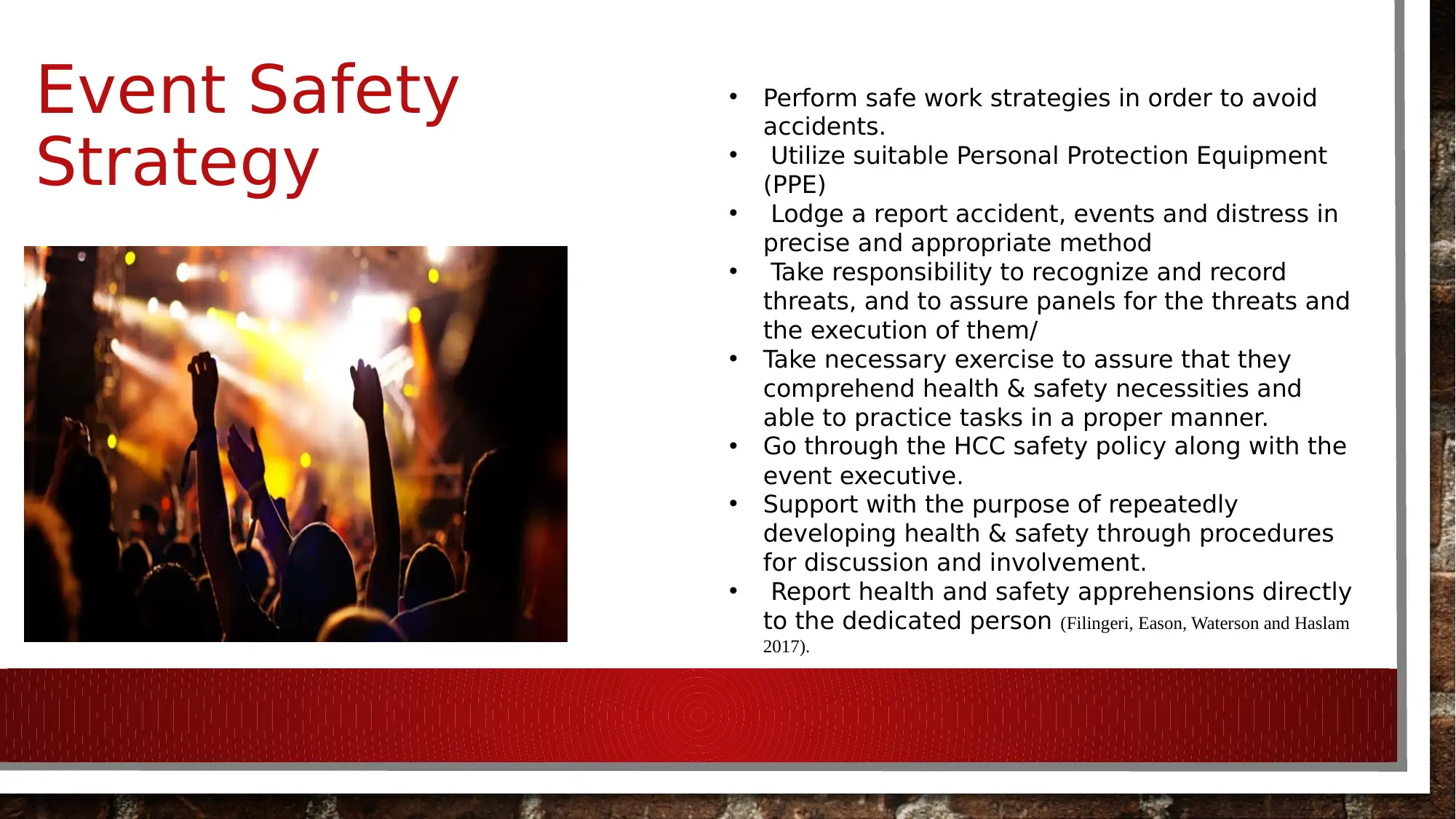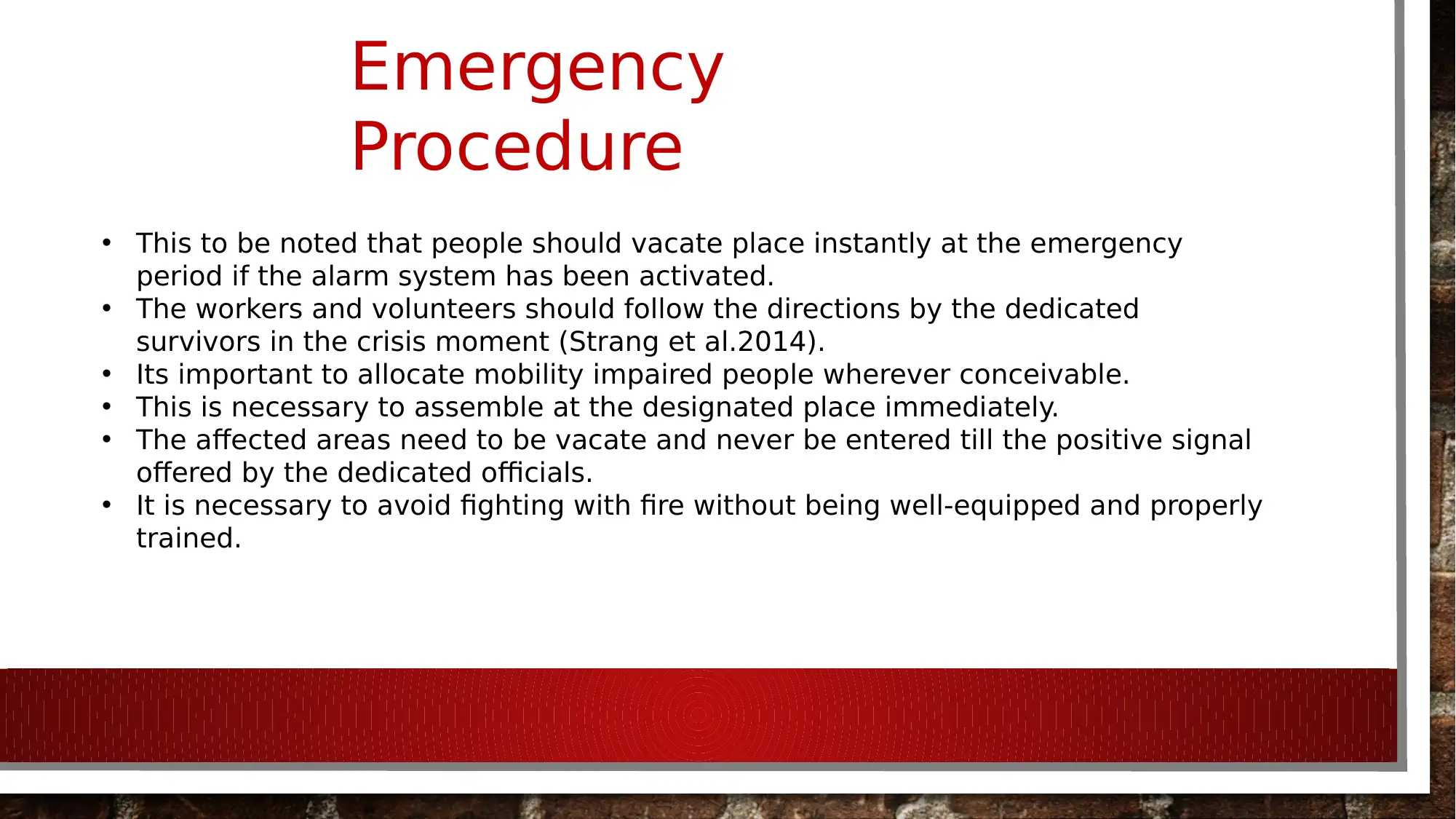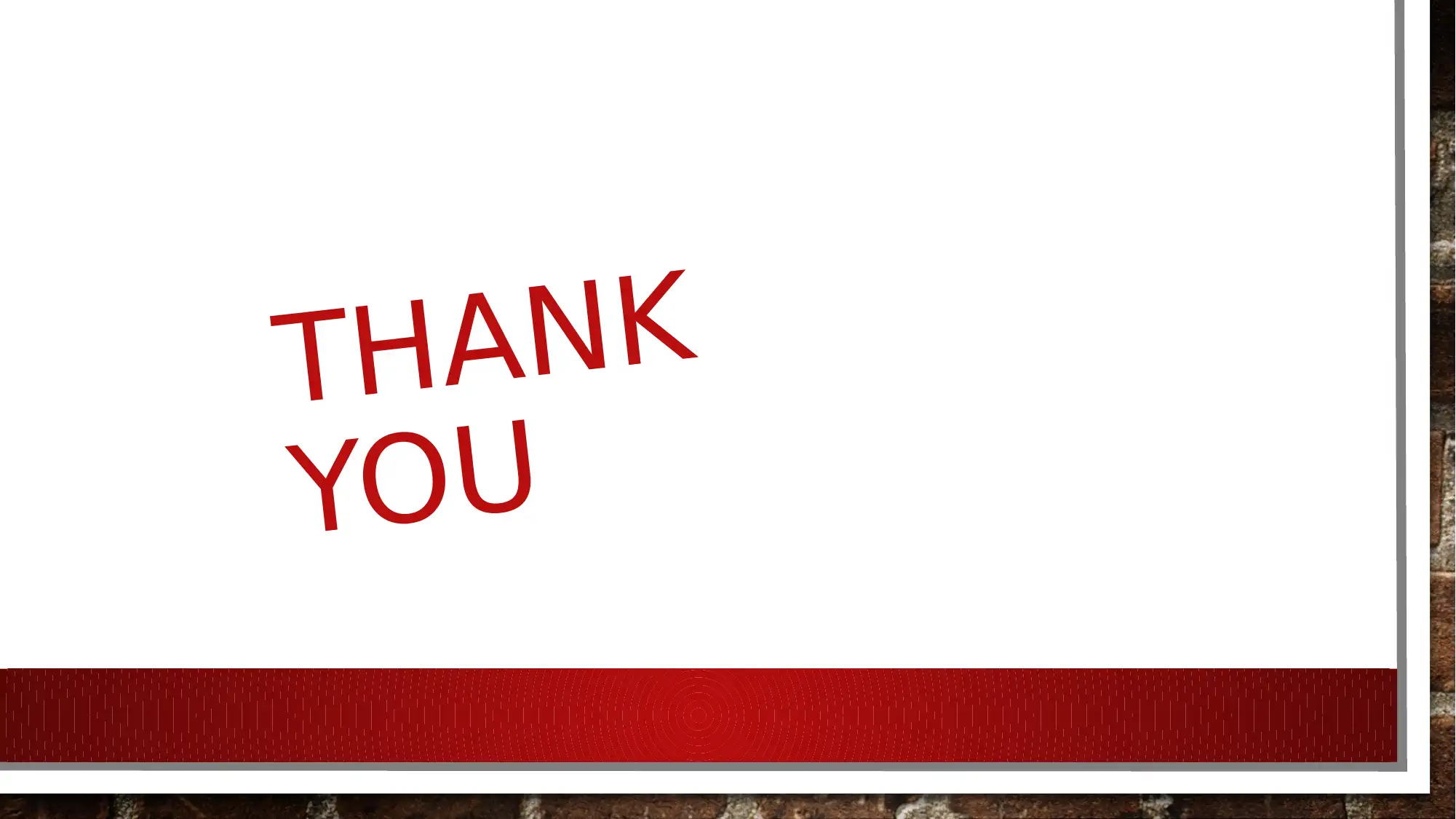Venue/Facility Management 'TED' Presentation: Strategies & Safety
VerifiedAdded on 2023/06/14
|9
|932
|487
Presentation
AI Summary
This presentation focuses on the critical aspects of venue and facility management, emphasizing safety, risk mitigation, and emergency preparedness. It highlights the importance of securing event spaces, implementing safety protocols for workers and attendees, and adhering to health and safety r...

Significance of the
Venue and Facility
Maintenance
Importance and relevance of the venue/facility
maintenance and repair to event venue
managers
Venue and Facility
Maintenance
Importance and relevance of the venue/facility
maintenance and repair to event venue
managers
Paraphrase This Document
Need a fresh take? Get an instant paraphrase of this document with our AI Paraphraser

Security
Commitment
• Offering a secured space for event
• Offering secured structures of specific task
• Offering secured plant and tools
• Offering teaching and direction to the dedicated workers comprising volunteers under
their supervision
• Inspiring secured applications in the field
• Observing with the health & safety in employment act 1992 and it’s modifications
(Gillentine, Grady, Miller and Pettus 2016)
Commitment
• Offering a secured space for event
• Offering secured structures of specific task
• Offering secured plant and tools
• Offering teaching and direction to the dedicated workers comprising volunteers under
their supervision
• Inspiring secured applications in the field
• Observing with the health & safety in employment act 1992 and it’s modifications
(Gillentine, Grady, Miller and Pettus 2016)

Law
• The purpose of the strategies and actions
is to assure the health and safety of the
workers and invitees.
• Make sure that the strategies and actions
in written format and accessible to the
dedicated workers and volunteers (Bartollas,
Schmalleger and Turner 2017).
• The documented strategies require to be
executed properly.
• It is important to assess the risk factors to
recognize threats and appliance suitable
control methods in discussion with event
facilities and venue management.
• The purpose of the strategies and actions
is to assure the health and safety of the
workers and invitees.
• Make sure that the strategies and actions
in written format and accessible to the
dedicated workers and volunteers (Bartollas,
Schmalleger and Turner 2017).
• The documented strategies require to be
executed properly.
• It is important to assess the risk factors to
recognize threats and appliance suitable
control methods in discussion with event
facilities and venue management.
⊘ This is a preview!⊘
Do you want full access?
Subscribe today to unlock all pages.

Trusted by 1+ million students worldwide

Event Safety
Strategy
• Perform safe work strategies in order to avoid
accidents.
• Utilize suitable Personal Protection Equipment
(PPE)
• Lodge a report accident, events and distress in
precise and appropriate method
• Take responsibility to recognize and record
threats, and to assure panels for the threats and
the execution of them/
• Take necessary exercise to assure that they
comprehend health & safety necessities and
able to practice tasks in a proper manner.
• Go through the HCC safety policy along with the
event executive.
• Support with the purpose of repeatedly
developing health & safety through procedures
for discussion and involvement.
• Report health and safety apprehensions directly
to the dedicated person (Filingeri, Eason, Waterson and Haslam
2017).
Strategy
• Perform safe work strategies in order to avoid
accidents.
• Utilize suitable Personal Protection Equipment
(PPE)
• Lodge a report accident, events and distress in
precise and appropriate method
• Take responsibility to recognize and record
threats, and to assure panels for the threats and
the execution of them/
• Take necessary exercise to assure that they
comprehend health & safety necessities and
able to practice tasks in a proper manner.
• Go through the HCC safety policy along with the
event executive.
• Support with the purpose of repeatedly
developing health & safety through procedures
for discussion and involvement.
• Report health and safety apprehensions directly
to the dedicated person (Filingeri, Eason, Waterson and Haslam
2017).
Paraphrase This Document
Need a fresh take? Get an instant paraphrase of this document with our AI Paraphraser

Field Safety
• The event manage needs to be safe at first place.
• The manager should risk worker’s life.
• Needs to wear robust footwear.
• Needs to be outfitted properly.
• Good to restrict children’s entry
• Good to avoid drugs and alcohol consumption in event.
• Effective to put no smoking signs in the field.
• Good to follow directions of the dedicated supervisors.
• Needs to be guarded with personal protective equipment
• Helpful to report threats or accidents to the dedicated employees.
• Fire and building protection policies need to be turned on in every possible circumstances
(Filce, Hall and Phillips 2016).
• The event manage needs to be safe at first place.
• The manager should risk worker’s life.
• Needs to wear robust footwear.
• Needs to be outfitted properly.
• Good to restrict children’s entry
• Good to avoid drugs and alcohol consumption in event.
• Effective to put no smoking signs in the field.
• Good to follow directions of the dedicated supervisors.
• Needs to be guarded with personal protective equipment
• Helpful to report threats or accidents to the dedicated employees.
• Fire and building protection policies need to be turned on in every possible circumstances
(Filce, Hall and Phillips 2016).

Risk Management
• Hazard identification: Its important to recognize
the issue.
• Evaluate the risks: This is essential to
understand the seriousness of an issue.
• Avoid or manage the risks: The actions should
be determined to combat with the crisis (Mcneil,
Frey and Embrechts 2015).
• Review: It is important to review the strategies
highlighting the issues.
• Hazard identification: Its important to recognize
the issue.
• Evaluate the risks: This is essential to
understand the seriousness of an issue.
• Avoid or manage the risks: The actions should
be determined to combat with the crisis (Mcneil,
Frey and Embrechts 2015).
• Review: It is important to review the strategies
highlighting the issues.
⊘ This is a preview!⊘
Do you want full access?
Subscribe today to unlock all pages.

Trusted by 1+ million students worldwide

• This to be noted that people should vacate place instantly at the emergency
period if the alarm system has been activated.
• The workers and volunteers should follow the directions by the dedicated
survivors in the crisis moment (Strang et al.2014).
• Its important to allocate mobility impaired people wherever conceivable.
• This is necessary to assemble at the designated place immediately.
• The affected areas need to be vacate and never be entered till the positive signal
offered by the dedicated officials.
• It is necessary to avoid fighting with fire without being well-equipped and properly
trained.
Emergency
Procedure
period if the alarm system has been activated.
• The workers and volunteers should follow the directions by the dedicated
survivors in the crisis moment (Strang et al.2014).
• Its important to allocate mobility impaired people wherever conceivable.
• This is necessary to assemble at the designated place immediately.
• The affected areas need to be vacate and never be entered till the positive signal
offered by the dedicated officials.
• It is necessary to avoid fighting with fire without being well-equipped and properly
trained.
Emergency
Procedure
Paraphrase This Document
Need a fresh take? Get an instant paraphrase of this document with our AI Paraphraser

Reference
Bartollas, C., Schmalleger, F., & Turner, M. G. (2017). Juvenile delinquency. Pearson.
Filce, r., Hall, S. A., & Phillips, D. (2016). Stadium alcohol management: A best practices approach. International journal
of sport management, recreation & tourism, 21, 48-65.
Filingeri, v., Eason, K., Waterson, P., & Haslam, R. (2017). Factors influencing experience in crowds–the participant
perspective. Applied ergonomics, 59, 431-441.
Gillentine, a., Grady, J., Miller, J. J., & Pettus, K. (2016). Accessible tailgating: an examination of ADA requirements and
implications associated with tailgating activities. Journal of legal aspects of sport, 26(1), 52-65.
Mcneil, a. J., Frey, R., & Embrechts, P. (2015). Quantitative risk management: concepts, techniques and tools. Princeton
university press.
Stang, a. S., Hartling, L., Fera, C., Johnson, D., & Ali, S. (2014). Quality indicators for the assessment and management of
pain in the emergency department: a systematic review. Pain research and management, 19(6), e179-e190.
Bartollas, C., Schmalleger, F., & Turner, M. G. (2017). Juvenile delinquency. Pearson.
Filce, r., Hall, S. A., & Phillips, D. (2016). Stadium alcohol management: A best practices approach. International journal
of sport management, recreation & tourism, 21, 48-65.
Filingeri, v., Eason, K., Waterson, P., & Haslam, R. (2017). Factors influencing experience in crowds–the participant
perspective. Applied ergonomics, 59, 431-441.
Gillentine, a., Grady, J., Miller, J. J., & Pettus, K. (2016). Accessible tailgating: an examination of ADA requirements and
implications associated with tailgating activities. Journal of legal aspects of sport, 26(1), 52-65.
Mcneil, a. J., Frey, R., & Embrechts, P. (2015). Quantitative risk management: concepts, techniques and tools. Princeton
university press.
Stang, a. S., Hartling, L., Fera, C., Johnson, D., & Ali, S. (2014). Quality indicators for the assessment and management of
pain in the emergency department: a systematic review. Pain research and management, 19(6), e179-e190.

THANK
YOU
YOU
⊘ This is a preview!⊘
Do you want full access?
Subscribe today to unlock all pages.

Trusted by 1+ million students worldwide
1 out of 9
Related Documents
Your All-in-One AI-Powered Toolkit for Academic Success.
+13062052269
info@desklib.com
Available 24*7 on WhatsApp / Email
![[object Object]](/_next/static/media/star-bottom.7253800d.svg)
Unlock your academic potential
© 2024 | Zucol Services PVT LTD | All rights reserved.





